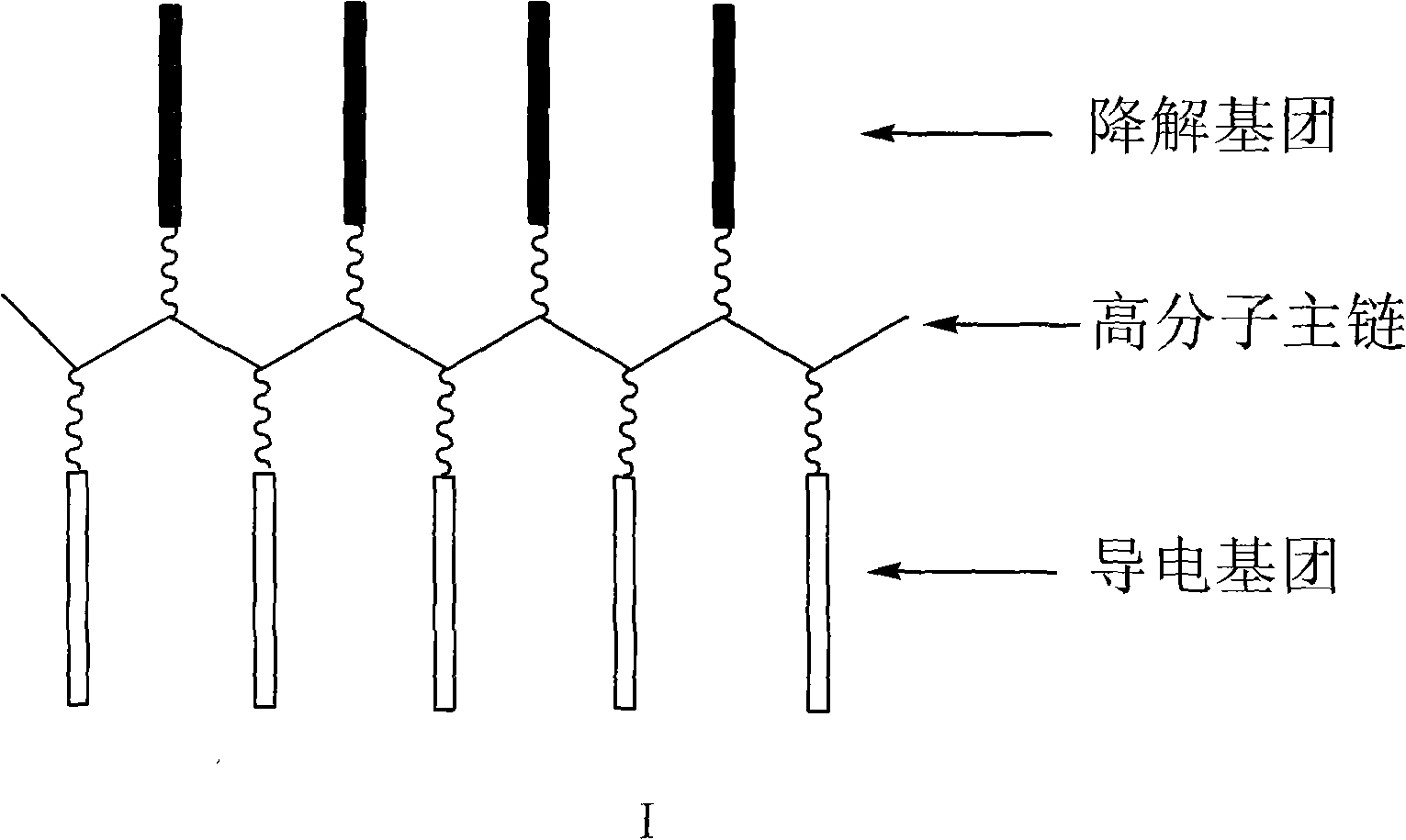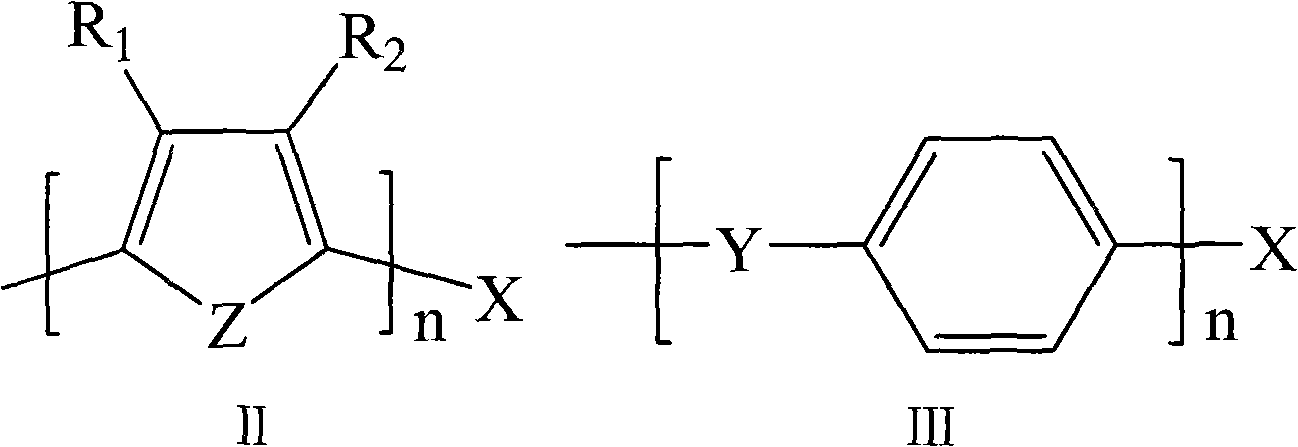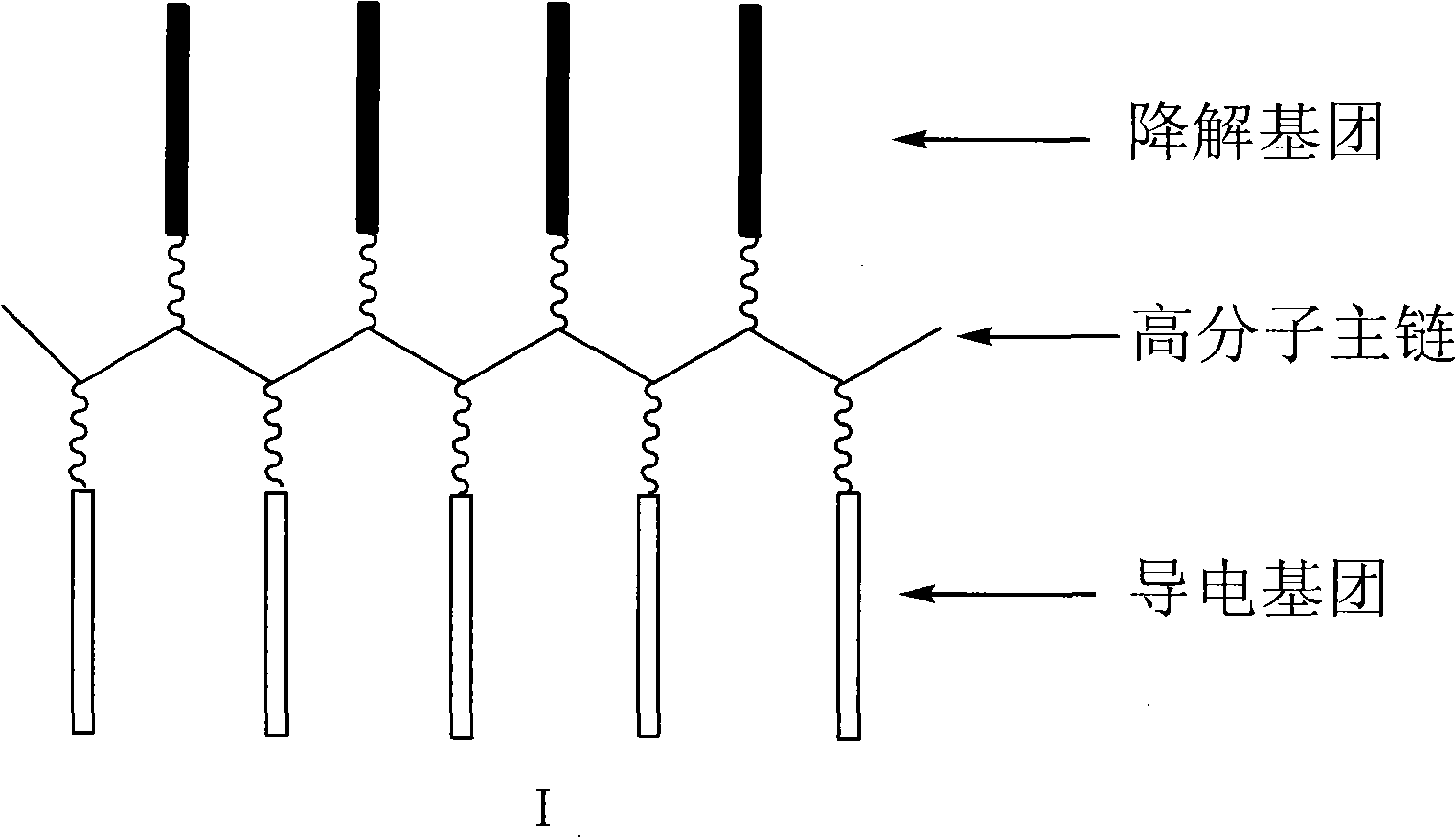Degradable conductive biological medical polymer material
A polymer material, biomedical technology, used in catheters, medical science, non-metallic conductors, etc., can solve the problems of difficult and difficult processing and molding of conductive polymers
- Summary
- Abstract
- Description
- Claims
- Application Information
AI Technical Summary
Problems solved by technology
Method used
Image
Examples
Embodiment 1
[0052] Example 1 Preparation of poly(methylphenoxy / aniline hexamer) phosphazene
[0053] method 1:
[0054] (1) Preparation of polydichlorophosphazene
[0055] Nitrogen (N 2 Under the protection of ), the hexachlorotripolyphosphazene that has been purified by sublimation under reduced pressure for 3 times is put into the polymerization tube, and both ends of the polymerization tube mouth are melted and sealed under vacuum conditions. The unreacted hexachlorotripolyphosphazene was repeatedly washed with the petroleum ether; then the polymer was fully dissolved in tetrahydrofuran, and the tetrahydrofuran solution of the dissolved polymer 2 After filtering through a sand core funnel, slowly pour it into petroleum ether to obtain a white polydichlorophosphazene, which is dried under vacuum at 40°C to constant weight.
[0056] (2) Preparation of aniline hexamer
[0057] Dissolve 9.70 g of p-phenylenediamine in 250 mL of absolute ethanol, add 20 mL of acetaldehyde, and after com...
Embodiment 2
[0080] ②Conductivity: The conductivity of the material was measured by the standard four-point probe method: 7.8×10 -5 S / cm. Example 2 Preparation of poly(ethyl glycine ester / aniline hexamer) phosphazene
[0081] (1) Preparation of polydichlorophosphazene
[0082] After the hexachlorotripolyphosphazene purified by sublimation three times was melted and ring-opened at 250° C. for 24 hours, the unreacted hexachlorotripolyphosphazene was repeatedly washed with hot petroleum ether. Then use tetrahydrofuran to fully dissolve the polymer, and pass the tetrahydrofuran solution dissolving the polymer through G. 2 After filtering through a sand core funnel, slowly poured into n-heptane to precipitate to obtain white polydichlorophosphazene, which was vacuum dried at 40°C to constant weight.
[0083] (2) Preparation of aniline hexamer
[0084] Dissolve 14.5g of p-phenylenediamine in 300mL of anhydrous ethanol, add 30mL of acetaldehyde, after it is completely dissolved, slowly add 15...
Embodiment 3
[0094] Example 3 Preparation of poly(imidazolyl / aniline hexamer) phosphazene
[0095] (1) Preparation of polydichlorophosphazene
[0096] Nitrogen (N 2 Under the protection of ), the hexachlorotripolyphosphazene purified by sublimation under reduced pressure for 3 times was put into the polymerization tube, the two ends of the polymerization tube mouth were melted and sealed under vacuum conditions, and the ring-opening polymerization was melted at 250 ° C for 36 hours, and then tetrahydrofuran was used. Fully dissolve the polymer, pass the tetrahydrofuran solution of the dissolved polymer through G 2 After filtration through a sand core funnel, slowly poured into n-heptane to obtain white polydichlorophosphazene, which was dried under vacuum at 40°C to constant weight.
[0097] 2) Preparation of aniline hexamer
[0098] Dissolve 19.4 g of p-phenylenediamine in 500 mL of absolute ethanol, add 40 mL of acetaldehyde, and after it is completely dissolved, slowly add 20 mL of c...
PUM
 Login to View More
Login to View More Abstract
Description
Claims
Application Information
 Login to View More
Login to View More - R&D
- Intellectual Property
- Life Sciences
- Materials
- Tech Scout
- Unparalleled Data Quality
- Higher Quality Content
- 60% Fewer Hallucinations
Browse by: Latest US Patents, China's latest patents, Technical Efficacy Thesaurus, Application Domain, Technology Topic, Popular Technical Reports.
© 2025 PatSnap. All rights reserved.Legal|Privacy policy|Modern Slavery Act Transparency Statement|Sitemap|About US| Contact US: help@patsnap.com



